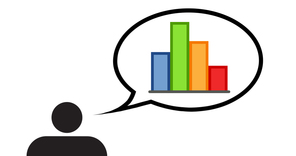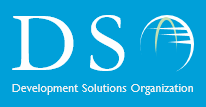No matter where you are in the world, medicine is a demanding and difficult practice. Whether delivering newborns or treating disease, health workers are responsible for their patients’ lives on a daily basis. To maximize quality of care and minimize error, health workers in developed countries receive top-notch training from well-funded institutions. But without access to these institutions, how do health workers in low-resource environments get the training they need? Placed in high-pressure situations, how are these workers trained to perform effectively and to avoid potentially fatal mistakes?

Given resource constraints, training materials for these health workers should be detailed yet easily understood. Training materials should be easy to access, requiring little more than an internet connection and a computer screen. And most importantly, training materials should be free. It would be difficult for an organization to meet any two of these ideal conditions, let alone all three.
That’s where Global Health Media Project comes in.
Global Health Media Project (GHMP) is a nonprofit that develops and distributes high-quality video training materials for health workers in low-resource settings. It’s an organization that meets all three of the conditions listed above. GHMP’s precise and descriptive videos are used as primary educational materials. GHMP’s videos have been downloaded in almost every country, both developing and developed, across the globe. And all of GHMP’s videos are completely free, which makes GHMP’s services a quality offering suited perfectly to its niche.
Unfortunately, it can become difficult to sustain a quality offering when it’s free of charge. In spring of 2015, GHMP was looking to grow operations and extend its reach. To do this, GHMP wanted help in determining a sustainable business model to use going forward.
That’s when Development Solutions Organization came in.
From March to June of this year, I worked as a consultant with DSO on a project for GHMP. This project involved extensive research and analysis on a wide range of potential business models, culminating with a final presentation recommending an optimal business model and implementation timeline for GHMP’s use. As a student consultant, I engaged with all stages of the project, from qualitative research to data analysis. Our team began by developing a full understanding of GHMP’s position in its market. From there, we conducted a high-level review of numerous business models, including models similar to those of Kiva and Kickstarter. We then examined these business models for feasibility, and with this step started transitioning from qualitative to quantitative analysis. Given access to inside data on GHMP’s download and usage demographics, we moved on to create data visualizations extracting key insights from the numbers.
If I were to name the most important skill I learned through my work with GHMP, it’d be the ability to use data to tell stories. As a Communication major, I feel my qualitative research skills are much more developed than my quantitative research skills. Fortunately, the majority of my work on the project gave me extensive practice in quantitative data analysis. Going into the process, I believed that figuring out how to cut and organize the numbers would be the most difficult part of data analysis. It turned out that properly cutting and organizing the numbers was the easy part. The hard part was figuring out how to use those numbers to tell a story. Show people a laundry list of statistical findings, and you can expect to get blank stares in response. Show people exactly how all of those statistical findings point towards a solution, and you can expect their undivided attention. Over the course of the project, I learned how to organize, order, and format numerical findings into a factual narrative. My first attempt at building data into a story wasn’t easy. But as the project went on, that process became increasingly natural. Going forward, I think that no matter what I end up doing as a career, fact-based storytelling will be a critical skill.
Show people exactly how statistical findings point towards a solution, and you can expect their undivided attention.
To close, I’ll touch on why working with Global Health Media Project this spring was a particularly striking experience for me. In the past, I’ve done similar consulting work through student groups and professional opportunities. But in the end, the purpose of all those projects was to help for-profit companies make more money. That’s not to say making money is a bad goal, and it’s certainly not to say I didn’t enjoy my work on those projects. Far from it. But given the choice between helping an organization to improve more lives and helping a company to make more money, I’ve learned from first-hand experience that the former option feels far more meaningful.
The videos that GHMP produces give health workers in low-resource environments the training they need to literally save lives. It’s not a stretch to say that the more videos GHMP produces, the more lives those health workers will be able to save. Helping to grow that critical impact was a goal I could invest myself in on both an intellectual and personal level.
In the future, I don’t know what kind of tasks and responsibilities my job will involve. What I do know is that I will, as much as possible, make the kind of meaningful work I did this spring a part of my career.
Contributed by Minkee Sohn
More information about the Global Health Media Project can be found here

